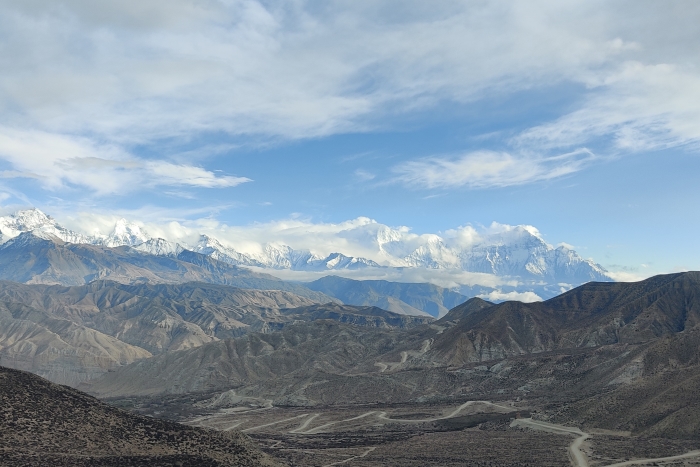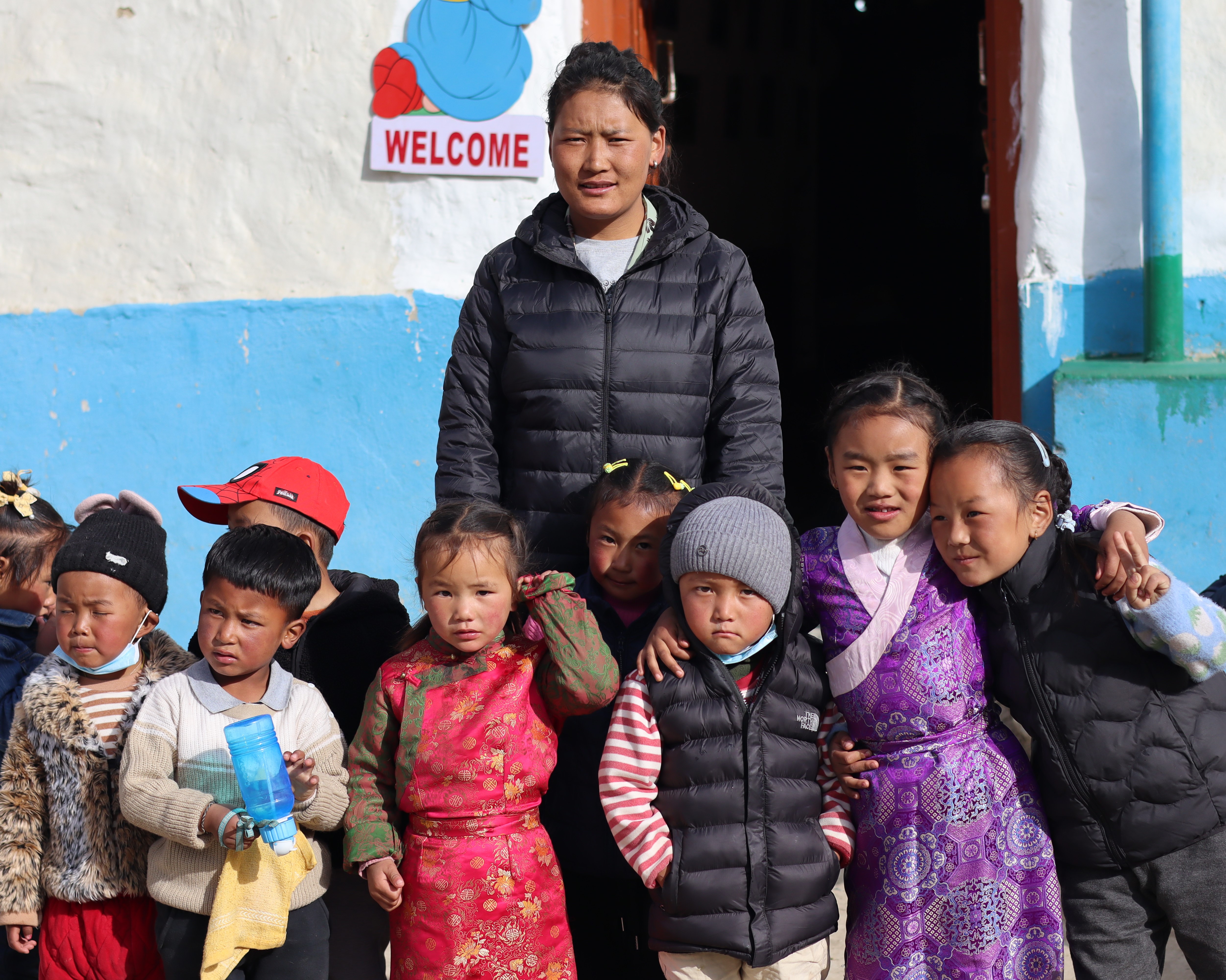Norkyi’s Song on a Ghiling Afternoon

Earlier this year, author Tom Hayes joined the AHF team on a trip to Nepal to meet with our partners and visit projects. During his visit, Tom immersed himself in the history of our programs and began writing about the deep-rooted relationship between AHF and our partners. In this four-part series, he shares his reflections on how these initiatives have grown into the successes they are today.
Steeped for a millennium in Tibetan Buddhist culture, favored geographically by snow-melt streams that irrigate farming for barley and wheat, Ghiling sits in a broad valley along the historic Kali Gandaki trading corridor.
For more than a thousand years, village locals provided food and shelter for merchant caravans with their yaks, mules and horses moving between the Tibetan plateau and India’s southern lowland and traded surplus crops for rock salt and wool.
The trade route remains but now brings tourists and festival-goers in jeeps and buses – and slowly rising commerce – along new dirt and gravel roads snaking through the valley.
The population of many villages in Upper Mustang has declined this century as more young people find work in cities like Kathmandu (metro population: 4 million) and Pokhara (500,000) but in Ghiling (pronounced GILL-ing) not so much.
Since 2002 we have funded the salary for a fulltime teacher and, more recently, an instructor of Tibetan language and culture in the village pre-school. The program has thrived. With 20 kids (in a community of 60 households), the Shree Utse Gompo Children Development Center has become one of the largest of fifteen village pre-schools with some 100 kids that AHF supports across Upper Mustang.

Just as in other communities around the world, these centers ease parents’ concerns as they meet other obligations in family and village life. The kids have a safe place to play, sing, dance, and learn how to brush their teeth and write alphabets in three languages, including Tibetan. Grandmothers sob hearing little children sing songs they have not heard since they were the same age.
Did someone say legacy? This young teacher with a few her charges (photo on the right) attended the same day-care program and nearby school as a child…a powerful testament to strong community ties and our commitment. An alumna in their midst.
Before we departed (on horseback and jeeps toward dinner and night’s sleep in Gami) five-year-old Norkyi, resplendent and proud in purple print dress, delighted us with a musical surprise – “Jingle Bells,” sequencing verses in Tibetan, refrains in English. Check out this joyful 30-second video:
In the top photo, we’re looking south more than thirty miles from Ghiling, at 12,000-feet elevation, toward the famed trekkers’ heaven – the snow-capped Annapurna Range and the tenth highest mountain in the world, Annapurna I.
The lure of Annapurna adventure introduced Richard to “P.K.” (Pasang Kami) Sherpa, his guide turned close friend, in 1968 and inspired him and his AHF co-founders to team with Sir Edmund Hillary a decade later. Their shared pursuit was to help Himalayan people improve their childcare, education, health clinics, hospitals, cultural preservation and more.
This, of course, remains AHF’s focus and purpose. It motivates their passion for persevering small villages like Ghiling and helping families invest in their children. Parents want a good education for their kids, so the kids will have more options in life. For some, in Ghiling and elsewhere, this means bolstering the community to secure its future.
Photo and video credits: Tom Hayes